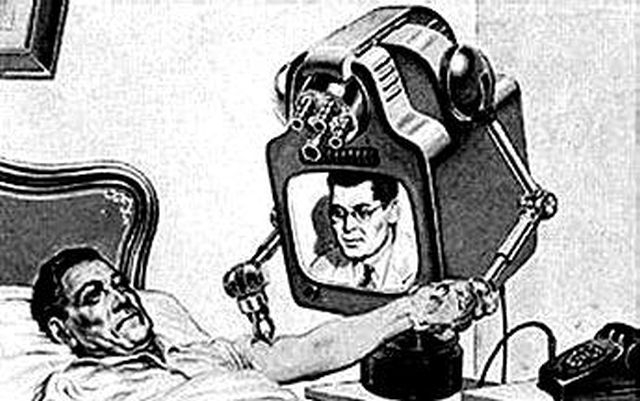Teledoctors: Bridging the Space Between Clients and Healthcare Companies
The emergence of teledoctors stands for a substantial shift in the healthcare landscape, providing options to long-standing availability issues faced by clients and service providers alike. By integrating telemedicine into typical methods, healthcare systems can reach underserved and remote populations, providing important clinical appointments without the barriers of range and traveling. This paradigm change not only improves person involvement however additionally maximizes source allowance for companies. However, the extensive fostering of teledoctors increases essential questions regarding the sustainability of such practices and the effects for future medical care distribution. What obstacles lie ahead in guaranteeing this design's efficiency and equity?
Surge of Telemedicine

The increase of telemedicine is likewise sustained by the requirement for economical healthcare. Healthcare systems internationally are under pressure to decrease expenses while maintaining quality treatment, and telemedicine uses a sensible solution. By decreasing the requirement for physical sees, telemedicine decreases overhead expenses for health care facilities and eventually decreases the financial burden on individuals.
Additionally, the COVID-19 pandemic served as a stimulant, increasing the adoption of telemedicine techniques. Social distancing steps and the demand to lessen direct exposure danger required a change towards remote consultations, motivating regulatory bodies to adjust and support telehealth solutions. This change has not just tested telemedicine's efficacy yet additionally its potential to evolve as a staple part of modern-day healthcare systems.
Advantages for Individuals
As telemedicine continues to improve health care distribution, patients stand to obtain substantially from this makeover. Mainly, telemedicine improves access, enabling clients in underserved or remote locations to consult health care service providers without the requirement for extensive travel. This is specifically valuable for people with wheelchair problems or those staying in country regions where health care centers may be scarce. Telemedicine additionally offers individuals the convenience of obtaining clinical guidance and therapy from the convenience of their homes, decreasing the moment and cost associated with traveling to a health care facility.
Moreover, telemedicine sustains continuity of care by facilitating regular follow-ups and monitoring, which are vital for managing persistent conditions. Patients can easily set up consultations and gain access to health care services outside standard office hours, suiting their busy way of lives. This flexibility brings about boosted patient interaction and adherence to treatment plans, potentially leading to better health and wellness outcomes.
Additionally, telemedicine can assist alleviate the threat of infection transmission, a worry enhanced by the COVID-19 pandemic. By decreasing the need for in-person visits, clients can stay clear of crowded waiting spaces and lower direct exposure to transmittable health problems. Ultimately, telemedicine empowers patients by offering prompt, effective, and customized medical care services.
Benefits for Providers
For medical care carriers, telemedicine supplies considerable benefits that enhance the performance and reach of their practice. By leveraging electronic innovation, suppliers can prolong their solutions to a wider demographic, consisting of those in remote or underserved areas. This not only eases geographical barriers but likewise maximizes person retention and procurement by making health care a lot more available.
Another key benefit is the decrease in overhead costs. With telemedicine, the demand for physical room lessens, permitting companies to reduce property and functional costs. In addition, telemedicine helps with better time administration by minimizing the need for permitting and commuting for even more adaptable organizing. This adaptability can bring about enhanced person appointments each day, thereby boosting income capacity.
Telemedicine also promotes a more collective atmosphere for medical care service providers. teledoctors. It enables smooth sharing of try here client info among professionals, improving diagnostic accuracy and treatment end results. Furthermore, digital platforms can incorporate with electronic wellness records (EHRs), improving information accuracy and streamlining administrative tasks
In addition, telemedicine improves client fulfillment, which is vital for service provider track record and success. By supplying timely and convenient treatment, providers can enhance patient loyalty and involvement, further reinforcing the provider-patient relationship.
Overcoming Challenges
While telemedicine provides many advantages for medical care suppliers, it also presents obstacles that need mindful factor to consider. Healthcare providers must adhere to strict policies like HIPAA to shield delicate details, consequently calling for investment in safe and secure platforms and ongoing staff training. teledoctors.
An additional challenge is the electronic divide, which can hinder access to telemedicine solutions. Not all patients have equivalent accessibility to the needed technology or web connectivity, specifically those in country or underserved locations. This difference can aggravate existing health care inequalities, making it essential for providers to discover alternate options, such as partnerships with area companies, to bridge this space.
Additionally, there are constraints in carrying out physical evaluations from another location. Particular conditions call for in-person assessment, highlighting the demand for a hybrid model that incorporates telemedicine with conventional gos to. When telemedicine is ideal and making sure seamless changes in between virtual and in-person care., suppliers should navigate these obstacles by establishing methods to determine.
Future of Healthcare
The future of medical care is positioned for a transformative development, driven by the rapid combination of modern technology and advancement. Central Click This Link to this shift is the increase of telemedicine, which is redefining just how medical solutions are accessed and delivered. With innovations in data, telehealth systems are ending up being a lot more advanced, supplying real-time consultations, remote individual surveillance, and personalized care strategies. This not just boosts patient convenience but also expands i was reading this access to healthcare, particularly in underserved and rural locations.
Synthetic intelligence (AI) and artificial intelligence are likewise established to play critical roles. These innovations can analyze large amounts of data, giving anticipating understandings into client wellness, enhancing analysis precision, and personalizing treatment strategies. AI-driven devices can augment doctor' capacities, resulting in even more educated decision-making and much better individual end results.
Additionally, wearable technology and Net of Medical Points (IoMT) devices are transforming individual engagement and proactive health monitoring. These gadgets allow constant health and wellness surveillance, enabling for very early discovery of prompt interventions and possible issues.
As these modern technologies continue to advance, they promise to develop a much more efficient, obtainable, and patient-centric health care system, eventually connecting the gap between clients and doctor. - teledoctors
Conclusion
Teledoctors are transforming medical care by dramatically improving availability and performance with remote consultations. This innovation supports individuals in underserved areas by supplying prompt clinical recommendations without calling for physical visits, therefore improving client involvement and continuity of care. Healthcare suppliers gain from a lot more efficient time administration and boosted collaboration chances. In spite of obstacles such as technological obstacles and governing issues, the future of health care appears effective and increasingly comprehensive because of the assimilation of telemedicine right into typical treatment designs.

As telemedicine proceeds to reshape healthcare distribution, clients stand to get substantially from this change. Mostly, telemedicine improves access, permitting clients in remote or underserved locations to speak with healthcare companies without the requirement for considerable travel. Telemedicine additionally uses patients the ease of obtaining clinical suggestions and therapy from the comfort of their homes, reducing the time and price linked with traveling to a healthcare center.
Inevitably, telemedicine encourages clients by providing prompt, efficient, and customized healthcare services.